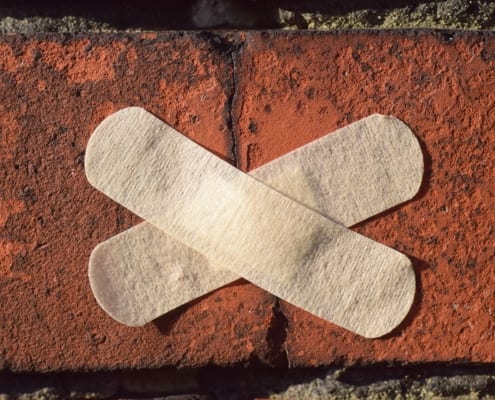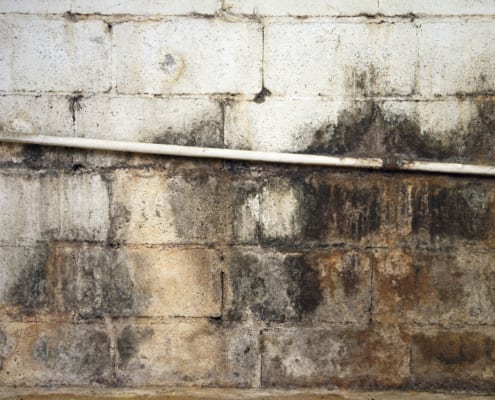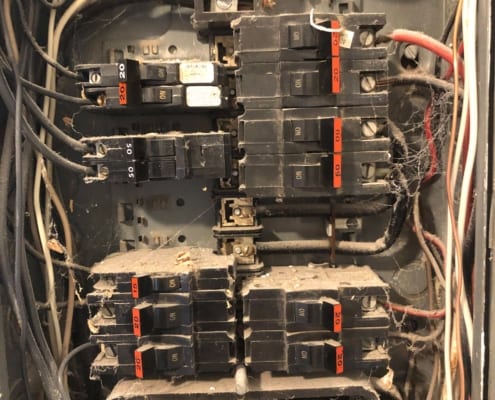The “BIG” items in a home inspection report are the ones that you need to pay the most attention to. These items may implicate costly repairs and have the highest potential to kill a deal.
Home inspection deal breakers will vary, based on the person buying a home. Someone looking for a “turn-key” ready home may back out due to minor cosmetic structural issues or a roof that will need replacing soon.
In contrast, a buyer with a seriously high risk tolerance or who is looking for a “fixer-upper” may not shy away from serious issues such as structural flaws, a cracked foundation, and other such problems. The seller will likely have to reduce the price accordingly, but the home still could be sold.
However, there are a few home inspection deal breakers that are pretty consistent. Most buyers will not want to complete the purchase of a home that has serious issues.
If the inspection report comes back with a multitude of issues, buyers may wonder what they can ask the seller to remedy before moving forward with the purchase of the home.
Here’s an overview of the “BIG” items in the inspection report.
The BIG Items to Look Out for
Structural Defects
Structural defects are found in the foundation or major load-bearing elements of a home. Signs are structural defects could be bulges, cracks, and other irregularities in the foundation and exterior framing. These serious structural problems are usually the result of poor structural design or construction techniques, but could also be result of damage from water or termites.
The primary cause of structural defects in Oklahoma homes is our expansive soils. If the problem is not taken into account during design and construction, expansive soils can lead to expensive repairs. It’s normal for new homes to “settle,” and slightly shift, but because expansive soil never wears out it can cause damage whenever there are changes in the soil’s moisture level. Tilted floors and cracks in walls, especially in doorways and windows, are signs of expansive soil damage.
Mold
Mold is typically found in homes that have been vacant for some time with no utilities. Mold can be remediated but depending on the cause it may just come back. If the mold came from a one-off accident that resulted in water entering the home, then remediation may solve the problem. However, when mold is found in basements it’s usually due to poor grading and drainage around the home. Until that gets fixed, the mold will continue to come back. Mold doesn’t need to be an automatic dealbreaker, just take the time to figure out the root of the problem to decide whether it’s worth fixing.
Outdated Electrical Components
Outdated wiring is mostly a problem in older homes built in the 1960s or earlier. Depending on the scope of the issues, outdated wiring could be a simple fix or require a complete overhaul of the electrical system.
One of the most common electrical issues found in Oklahoma homes are Stab-Lok circuit breakers. They have been noted as a serious safety hazard in homes and are responsible for thousands of fires each year.
Roof Damage
A roof with minor shingle damage is one thing – a roof that has been leaking for years due to improper maintenance is another. If there is extensive water damage that spreads throughout the rest of the home, you’re going to be looking at a big repair bill. However, remember to consider the age of the roof. If it’s nearing the end of its lifespan, it’s probably time to replace the roof anyway.
Buying a home isn’t cheap, so you want to be sure that you’re not going to wake up to thousands of dollars in unexpected repair expenses a month after you move in. Identifying the condition of the major components of a property prior to purchase can save you from sinking your money into a money pit. Getting an inspection report can even help get you a reduced selling price if you decide to move forward with the purchase!
It’s important to accompany the inspector during the home inspection because it’s a unique opportunity to learn about your potential new home. The inspector’s job is to give you the facts – something that is important when making a big investment.
Whether or not these BIG items result in a dealbreaker depends on the buyer. If the buyer is looking for a fixer-upper, the seller can negotiate a lower selling price based on the costs of these repairs.
If you’re buying a home, it’s a good idea to determine what your deal breakers are. This will help you negotiate more effectively, and know when to walk away from the deal.
Don’t Wait – Schedule an Inspection Today!
Your home is one of the biggest investments you’ll ever make. Protect that investment and the future it represents by working with a company that received their Certified Residential Thermographer (CRT) designation through Monroe Infrared. Schedule a home inspection with Redbud Property Inspections today!






